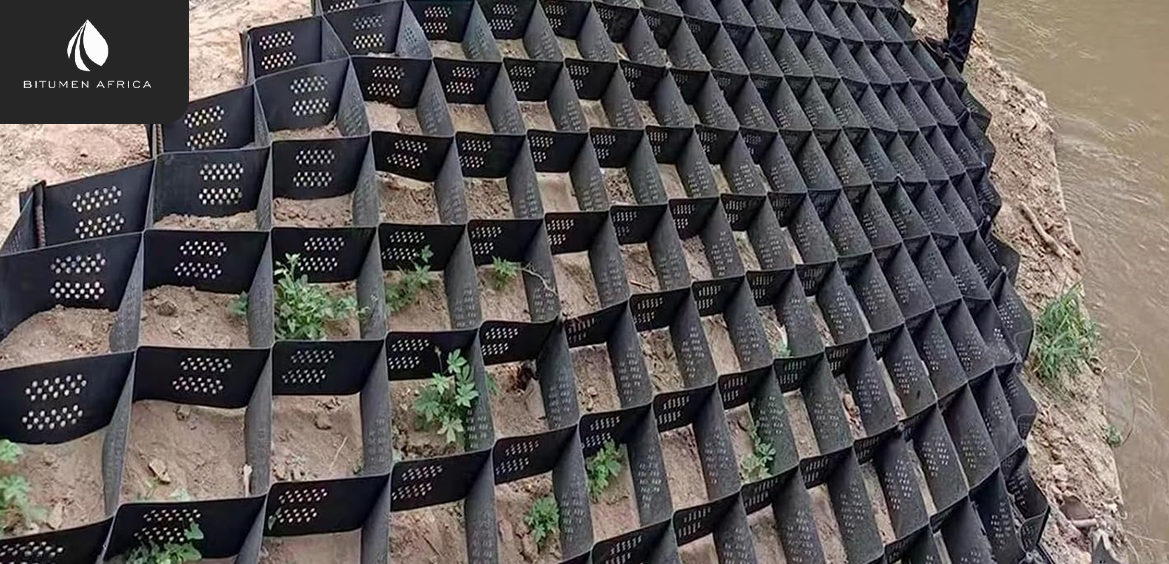A geogrid retaining wall is a type of soil reinforcement structure used to support and stabilize soil, often for creating slopes or terraced areas, preventing soil erosion, and improving the strength of the ground in areas where there are steep elevations or the need for retaining walls. Geogrid material, which is typically made of polymer-based synthetic material (like polyester or polypropylene), is used as a reinforcement element to increase the stability and load-bearing capacity of the retaining wall.
also read this: What is Thermoplastic Paints?
Here's how it works and its components:
Key Features of a Geogrid Retaining Wall:
- Geogrid Material: The primary material used is a geogrid, which is a type of mesh-like material with a grid pattern. These geogrids have high tensile strength, meaning they can withstand a lot of pulling or stretching forces without breaking. They are placed between layers of soil or other materials to reinforce them.
- Reinforced Soil: Instead of relying solely on traditional concrete or masonry for support, the geogrid retaining wall works by reinforcing the soil itself. The geogrid is typically layered between the soil, which helps in distributing loads, reducing the risk of soil slippage, and preventing erosion.
- Backfill Material: Behind the geogrid layers, granular material like crushed stone or gravel is often used as the backfill. This material helps with drainage and further reinforces the wall.
- Modular Blocks or Facing: Geogrid retaining walls often use modular blocks (often precast concrete blocks) or other facing materials that are stacked in a tiered fashion. These blocks hold the geogrid in place and form the actual visible structure of the retaining wall.
Advantages:
- Cost-Effective: Geogrid walls can be less expensive than traditional retaining walls made of concrete, stone, or masonry because they use less material and are easier to install.
- Improved Drainage: The structure allows water to flow through the soil and geogrid layers, reducing hydrostatic pressure and the risk of wall failure due to water buildup.
- Flexibility and Durability: Geogrids can be used for both small and large-scale projects, and they can handle heavy loads, making them suitable for highways, embankments, and large infrastructure projects.
- Aesthetic Appeal: When combined with attractive facing materials like decorative stone, brick, or vegetation, geogrid walls can be both functional and visually appealing.
Applications:
- Terracing: Geogrid walls are commonly used in landscaping to create terraces for agricultural purposes or to prevent soil erosion on slopes.
- Roads and Highways: Geogrid retaining walls are often used along highways to stabilize embankments or prevent landslides.
- Retaining Walls for Gardens or Lawns: Homeowners use geogrid walls to create stable, reinforced garden or lawn terraces in sloped areas.
Construction Process:
- Excavation and Base Preparation: The area is excavated to prepare a solid foundation. A level base is essential to ensure the stability of the structure.
- Geogrid Layer Installation: The geogrid material is laid down in successive layers, with each layer extending outward into the soil behind the wall. The geogrid layers are typically overlapped and anchored into the soil.
- Placing Blocks/Facing Material: Modular blocks or other facing materials are placed on the front side of the wall to provide stability and an aesthetic finish.
- Backfilling and Compaction: After the geogrid layers are in place, soil is backfilled and compacted behind the wall in layers, allowing the geogrid to effectively reinforce the soil.
In summary, a geogrid retaining wall is an engineered solution for stabilizing soil and preventing erosion. It is a more sustainable, cost-effective, and flexible approach than traditional masonry walls, often used in both residential and commercial projects.

